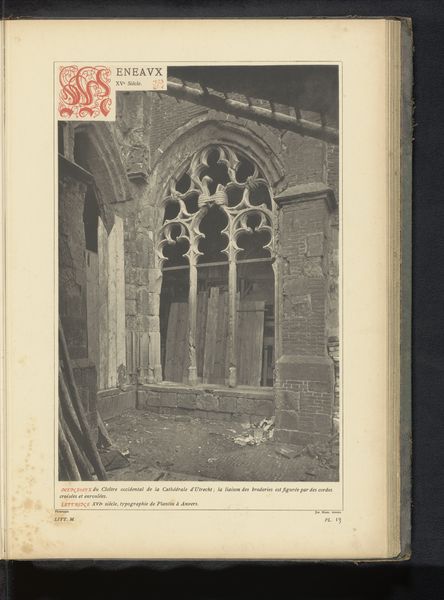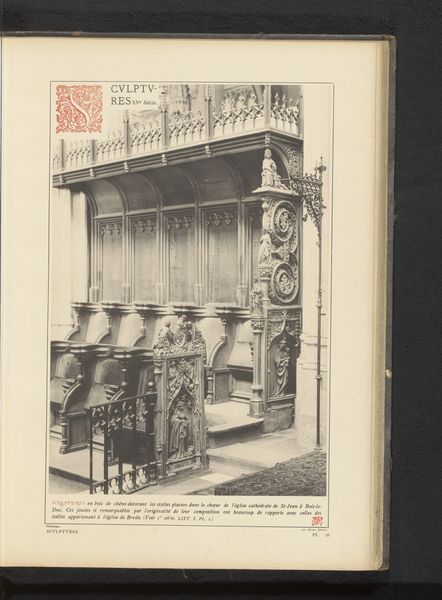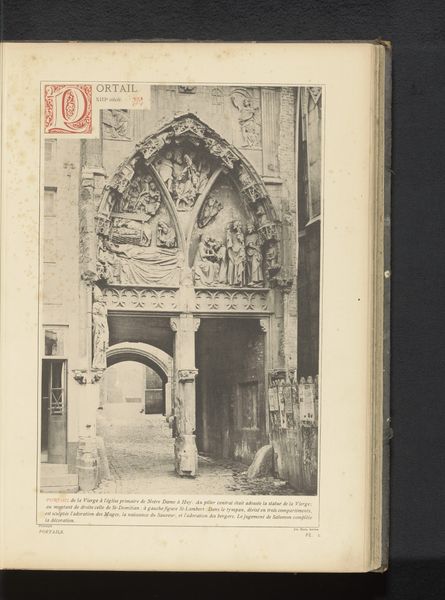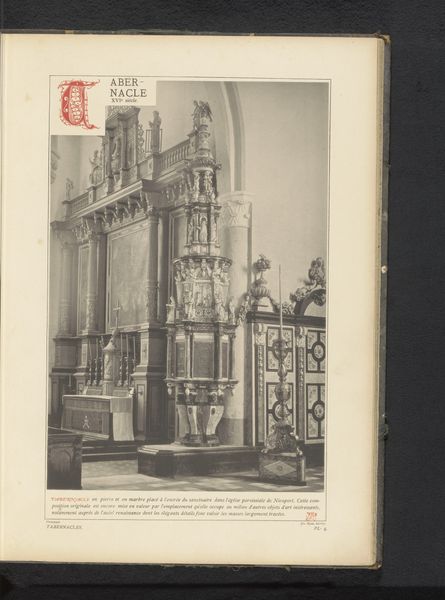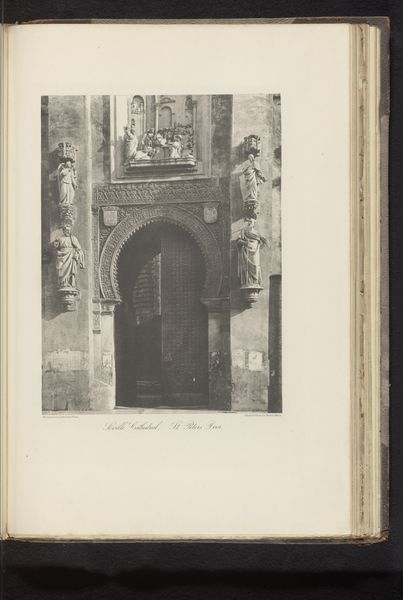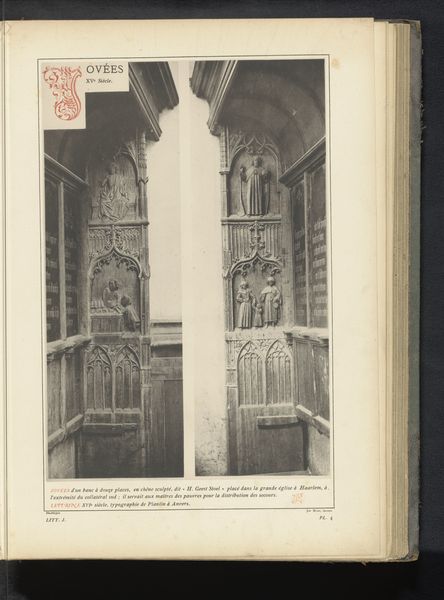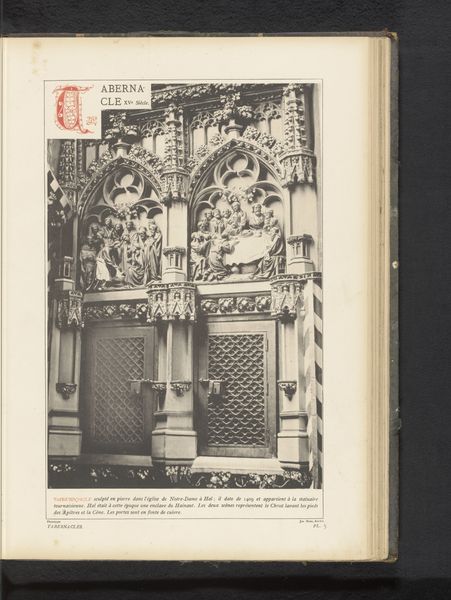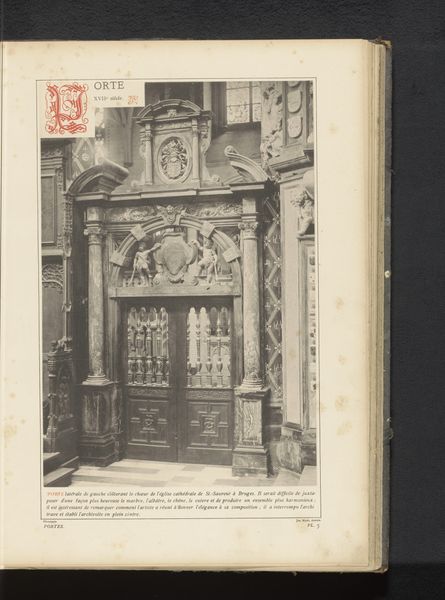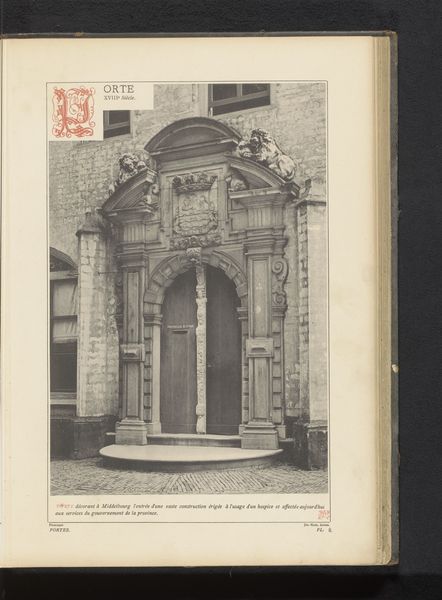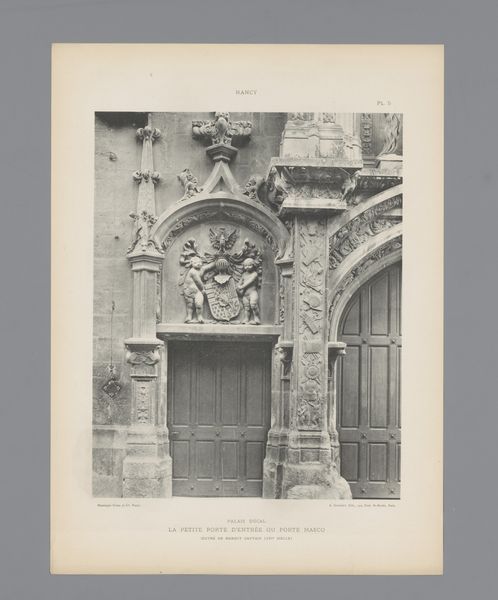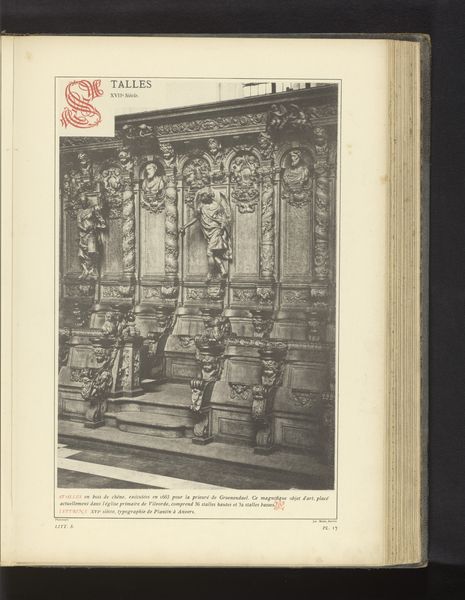
Fragmenten van sculpturen en pilaren van de Beurs van Antwerpen in Museum het Steen te Antwerpen before 1889
0:00
0:00
print, photography, sculpture
#
medieval
# print
#
landscape
#
photography
#
column
#
sculpture
Dimensions: height 341 mm, width 234 mm
Copyright: Rijks Museum: Open Domain
Curator: This is a photograph of fragments from the Antwerp Stock Exchange, specifically sculptures and columns, that reside in Museum Het Steen in Antwerp. The photograph predates 1889, capturing a moment of preservation. Editor: They strike me as relics, imposing yet melancholic. The grayscale palette accentuates their weathered textures, making them feel like ghosts of a more glorious past. Curator: Precisely. Notice how the ornamentation of the columns draws on Late Gothic architectural elements, evoking a specific historical and cultural context of mercantile power and civic identity. These weren't merely functional structures. Editor: But they're presented now, detached, as isolated aesthetic objects. It’s interesting how these pieces – symbolic of trade and capitalism in the 16th century – are now exhibited, likely divorced from that original narrative and placed in new contexts. Is there a shift in how we ascribe value? Curator: An incisive point! Their placement within the museum, as fragments, encourages a symbolic reading. They speak to the fragility of institutions and the shifting sands of power and wealth. Also note the persistence of specific motifs across time. The recurring quatrefoil design on the pillars connects visually to Medieval symbolism and enduring Christian influences. Editor: The contrast is sharp, though, between these monumental relics of wealth and whatever narratives Museum Het Steen chooses to construct around them. It seems that something so rooted in commerce could also spark reflection on wealth inequality. It depends heavily on the exhibition’s curatorial intentions. Curator: I see these remnants, perhaps like the photographer did so long ago, as historical symbols transcending their original utility to embody a sense of cultural continuity amidst constant transformation. The architecture serves as a link to our cultural memory. Editor: And I see potent questions raised regarding how historical symbols continue to justify contemporary values. We need to critically engage these representations as active participants rather than as passive recipients. Curator: Agreed. These relics provoke different questions depending on who engages with them and with what perspectives. Editor: Precisely the reason they still hold so much power, don’t they?
Comments
No comments
Be the first to comment and join the conversation on the ultimate creative platform.
